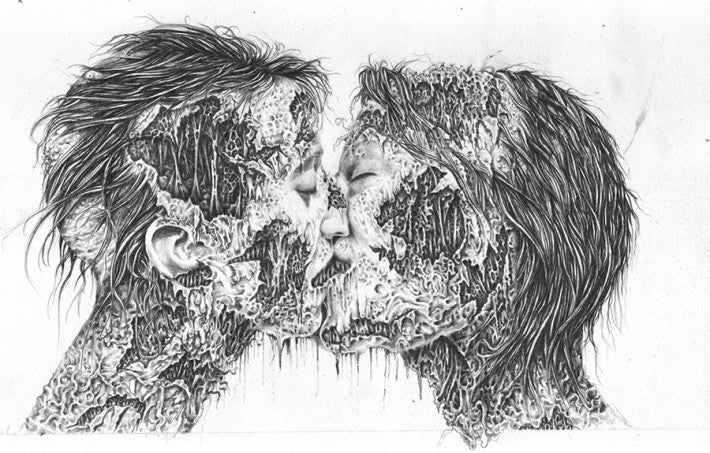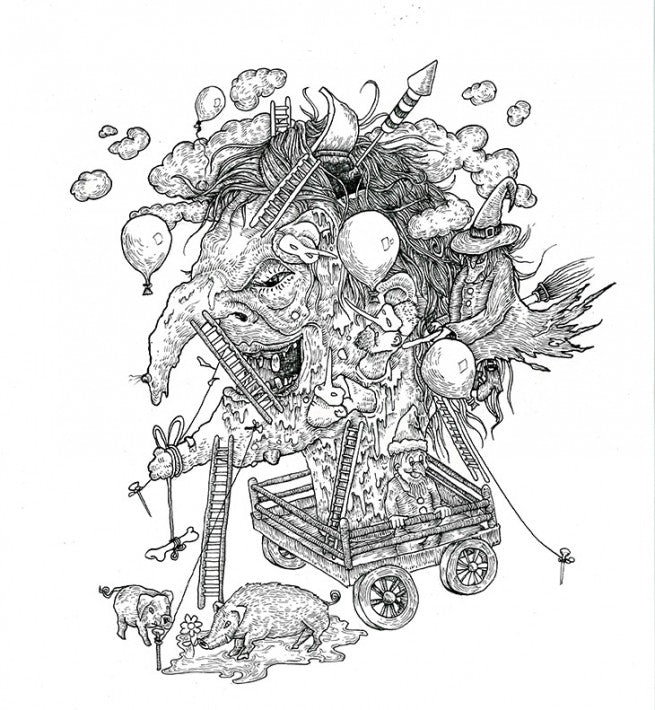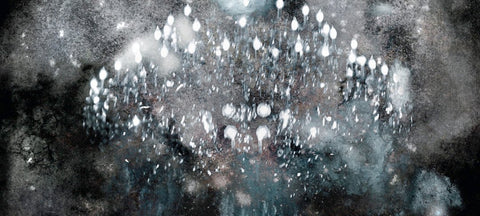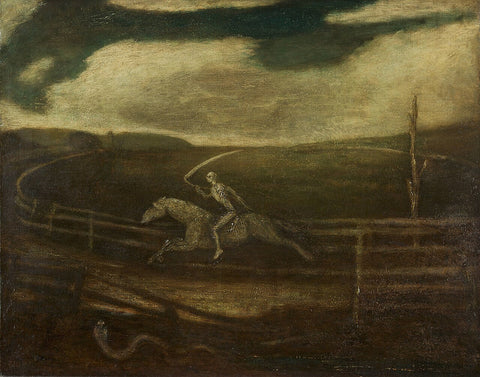
Dark Art & Craft recently got to know the one and only Seldon Hunt. Seldon's illustration work oozes detail and, if you're a fan of metal music, you've more than likely seen some of his amazing album art and T-shirt designs. We reached out to the New York-based artist for an interview via email.
How long have you been doing this madness and what's your background in art?
Seldon Hunt: I've been working as an artist for around 15 years. I studied design but moved into art pretty quickly after graduating. The office world of design wore thin after a year. I started working with Japanese noise musicians doing cover art and live animations and eventually was discovered by some reasonably well-known U.S. metal artists and began working predominantly in that scene, producing album art, posters, T-shirts, etc. I also moved into making tour documentaries. From working within that world, I was asked to exhibit in shows related to that world and eventually into more fine art stand alone environments.
What are you working on at the moment?
SH: Right now, I'm rediscovering my pen and ink techniques, but am working in a more detailed style than previously.

What are you doing when you’re not creating or working on art?
SH: At the moment, I'm really into exercising! I'm finding it great for inspiration and clearing the head.
Do you admire any artists / photographers? Where do you tend to find inspiration throughout your day?
SH: I'm a big fan of some of my contemporaries like Aaron Horkey, John Santos, and Lucas Ruggieri. They use similar mediums and themes and are always pushing themselves with concept and insane levels of detail. I love their commitment to the craft.
What kind of creative patterns, routines, or rituals do you have before working?
SH: Honestly, I really don't have any. Really it just depends on what needs to be done. I usually have enough commissions that I'm reasonably busy. I rarely have time to just doodle or play around. I wish I did. Usually if I need to be not working, I want to be outside.
What tools for creation do you employ?
SH: I'm pretty much any kind of fine-tipped black ink. I've tried a bunch of brands, but Microns work best. I used Rotrings a bit too, but just have a lot of trouble with a consistent line with the finer nibs. I scan my work in and when required I will use Photoshop to color.

Working for bands can be like the Wild West when it comes to art. A lot of the time, budgets are all over the place and what was once up is down and what's down is up. How did you find your way into doing illustration for such heavy and awesome bands?
SH: Mostly it was due originally to me traveling through the U.S. in 2001 and meeting a bunch of people like Neurosis and Isis. I showed them my work and one thing led to another. When I moved to NYC it picked up a lot, obviously due to being able to meet so many more bands as they came through town.
What role does the artist or designer have in society?
SH: I don't know anymore. I think social media has made most people believe they are one or the other, and the fascination with real designers and artists has been pretty diluted, I believe. Twenty years ago, for your work to be seen in public via exhibiting, commission, or publication, you had to have proved yourself and become skilled at your craft to get that kind of recognition. Now everyone is posting on Instagram, etc, and everyone is just so damned terrific.

Do you consider graphic design and illustration ‘the fine arts’ or more akin to business and does this line of reasoning have relevance anymore?
SH: I've always regarded it as business. The majority of successful illustrators are those with a good head for business and know how to direct their work into the right arenas and have the right people see it. Plus it's about satisfying a brief, rather than an abstract or conceptual, expression. There is certainly a line of 'fine art' that is displayed in magazines like High Fructose where the work to me is 'personal illustration' rather than fine art—and it's not a criticism, just an observation. I would fall into that category myself.
Shirtsanddestroy.com. How did that relationship start? Do you do any screen printing or production printing work yourself?
SH: I used to screen print a lot, but the studio I used went out of business in the giclee revolution of the early 2000s. I loved screen printing! Shirtsanddestroy.com was something that came about from working in the metal scene. They approached me and we did a few projects together. Very nice people.
Where else can we find you? (Blog, website, twitter, facebook etc)
SH: seldonhunt.com
IG: @seldon_hunt




